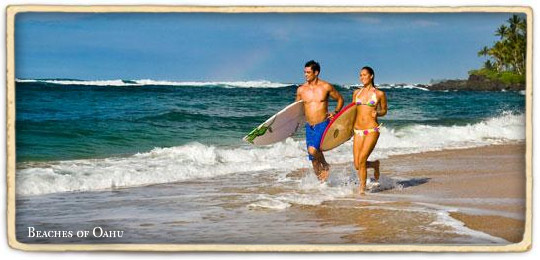
What is surfing?
The earliest written account of surfing, or "hee nalu" in Hawaiian, was by Lieutenant James King in 1779 just months after Captain Cook's death. He described Native Hawaiians riding a wood plank on the swells of Kealakekua Bay on Hawaii's Big Island. Even he could see how fun the sport was writing, "...they seem to feel a great pleasure in the motion that this exercise gives."
Surfing is believed to have originated long ago in ancient Polynesia, later thriving in Hawaii. It was once a sport only reserved for alii (Hawaiian royalty), which is why surfing is often called the "sport of kings." King Kamehameha I himself was known for his surfing ability. With the end of the Hawaiian kapu (taboo) system in 1819, commoners were allowed to freely participate in the sport. With the arrival of western missionaries in the 1800's, Hawaiian customs like hula and surfing were discouraged.
But in the late 1800's the "Merrie Monarch" King Kalakaua, one of the last reigning monarchs of the Hawaiian Kingdom, revived the hula signaling the return of Hawaiian cultural pride. In the early 1900's, surfing was revitalized on Waikiki Beach. Duke Kahanamoku, who grew up surfing these south shore waves, was a Waikiki Beach Boy, spreading aloha by teaching visitors how to surf and canoe. Duke later became a multiple gold-medal winner at the Olympics as a swimmer. Later in life he was known as the "father of modern surfing," spreading the popularity of the sport to the mainland U.S. and Australia. Today, a bronze statue of Duke welcomes visitors to Waikiki where first-time surfers are still learning to catch their first waves today.
Did big wave surfing begin in Hawaii?
Hawaii is also the birthplace of big wave surfing. In the 1950's surfers began to ride the powerful winter waves of Makaha on O‘ahu's west shore and Waimea Bay on the North Shore. Big wave season in Hawaii happens roughly between November and February on Hawaii's north shores. Some of the best surfing competitions in the world are held on O‘ahu's North Shore in November and December including the Vans Triple Crown of Surfing (the Super Bowl of surfing). If you're planning to watch the pros in action, get to the North Shore early because traffic can be heavy.
Where can I watch surfing?
You can watch surfers on every island. During the winter, the islands' north shores generate big swells, while in the summer, the south shores enjoy a bump in size. O‘ahu's North Shore is a legendary surf spot featuring viewer friendly beaches at Waimea Bay, Sunset Beach and the Banzai Pipeline.
Where can I take a surfing lesson?
You can take surfing lessons on almost every island. Lessons run between 1-2 hours and are taught by experienced surfers in gentle breaks. Longboards are used to make it even easier for first-timers and a push from your instructor will help you get started. Waikiki Beach is still one of the best spots in Hawaii to get on your feet and ride your first wave.
What is stand-up paddle boarding?
Stand-up paddle boarding is a variation on surfing that is becoming very popular in the islands. In stand-up paddle boarding (SUP) riders stand upright on wider, longer boards and use a paddle to maneuver. Great for a core muscle workout, SUP is often used for fitness rather than for riding waves. Lessons are highly recommended for your safety and for the safety of your fellow beach goers and surfers.
Note: Heed all warning signs. Talk to your instructor about changing conditions, strong currents and reefs. Use your own best judgment to determine whether a particular beach is appropriate for your ability level.


